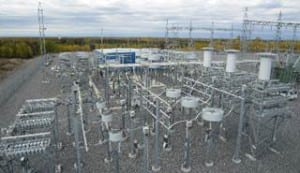reliability
-
Press Releases
ABB FACTS solution to help maintain grid stability for TVA as power generation mix changes
Tennessee Valley Authority (TVA), the largest public utility in the US, is installing ABB’s static var compensator (SVC) technology to help ensure system reliability as fossil fuel component of total energy mix declines. SVC’s enhance grid stabilization and at the same time enable a smarter grid. The ongoing quest to deliver power with a lower […]
-
Legal & Regulatory
[UPDATED] EPA Stands Ground on MATS with Final Cost Consideration
Public benefits offered by the Mercury and Air Toxics Standards (MATS) far outweigh the costs, the Environmental Protection Agency (EPA) said as it released a review of the 2012-finalized rule’s cost implications. The final cost consideration—released just days before power plants that received a one-year extension must come into compliance with the rule—was prompted by […]
-
O&M
Weighing Costs and Benefits in Hydropower Maintenance and Upgrade Decisions
Although other renewable sources of energy may be growing at a faster rate, more electricity continues to be generated in the U.S. by conventional hydropower than by wind, solar, and geothermal power combined
-
Power Demand
Pot, Power, and Politics
Legal marijuana, cultivated indoors on a large scale, poses a growing threat to electrical safety and a booming new business demand for electric power. Legal marijuana cultivation is posing electrical problems in three of the four states where recreational cannabis use is now permitted. The problem is that indoor growing operations—long a production staple when […]
-
Legal & Regulatory
Regulators, System Operators, and Utilities Consider Reliability, Renewables, and EPA Regulations
In a Monday morning session at the annual meeting in Austin of the National Association of Regulatory Utility Commissioners (NARUC), panelists and commissioners traded comments on challenges and successes related to integrating increasing levels of renewables while ensuring reliable grid operation. David Boyd, VP of government and regulatory affairs for the Midcontinent Independent System Operator […]
-
Legal & Regulatory
New Wave of Coal Retirements Coming, ERCOT Warns
The Clean Power Plan could force the retirement of up to 4 GW of coal-fired capacity in the region served by the Electric Reliability Council of Texas (ERCOT) starting as soon as 2022, an updated analysis suggests. The independent system operator that manages about 90% of Texas’ electric load acknowledged that fewer coal units are […]
-
O&M
ISOs, RTOs Outline Winterization Efforts
In presentations to the Federal Energy Regulatory Commission (FERC), the nation’s regional transmission organizations (RTOs) and independent system operators (ISOs) on Sept. 17 outlined measures they are taking to prevent issues if faced with extreme weather this winter. The measures are to prevent widespread generation outages as occurred during the Jan. 6–7, 2014, polar vortex. […]
-
Legal & Regulatory
Clean Power Plan Is Achievable, but Challenges Loom Large
The Environmental Protection Agency’s (EPA’s) Clean Power Plan (CPP) is feasible in its ultimate goals, but getting there will take a lot of work and some rethinking of how the targets are achieved
-
Legal & Regulatory
NERC: EPA’s Clean Power Rule Could Transform Coal Power Use
Implementation of the Environmental Protection Agency’s (EPA’s) proposed Clean Power Plan (CPP) could change the use of the U.S. coal-fired generating fleet from baseload to seasonal peaking—and pose grave implications for plant economics and operating feasibility, the North American Electric Reliability Corp. (NERC) suggests in new special assessment. The new report is the second […]
Tagged in: -
Renewables
DOE Highlights Challenges to Energy Infrastructure in Quadrennial Energy Review
The U.S. energy infrastructure needs not just substantial investment for the future but also considerable rethinking about its role and functions in order to be positioned to deal with a rapidly changing energy landscape and evolving threats from cyber attack and climate change. That was the message from William F. Hederman, Jr., Department of Energy […]









